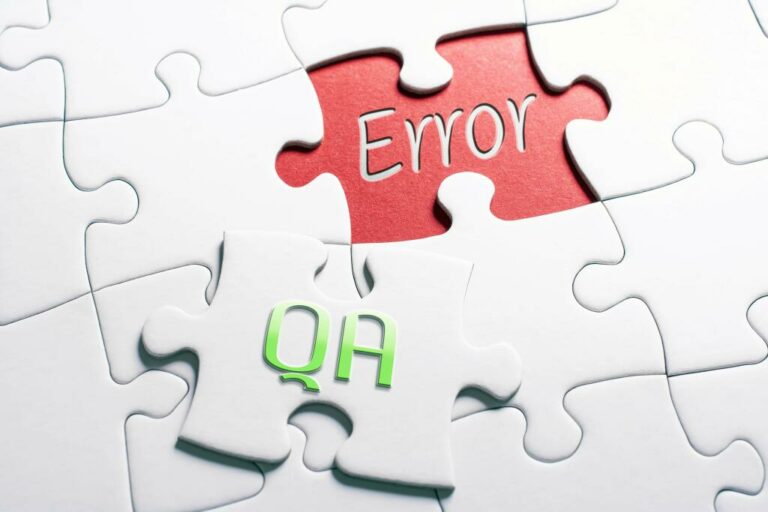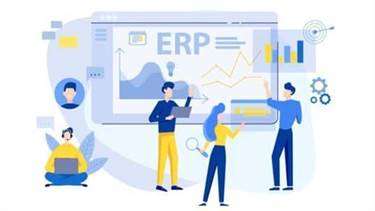Such software can help you effectively determine what moves or actions your organization takes to generate the most revenue. With this feature, you will constantly get real-time updates when a task is completed and email notifications to remind you of scheduled tasks and due dates. To clearly understand what enterprise SaaS is about, we should consider both entities separately to help us see what benefits they offer together. We are on a mission to empower and strengthen businesses across various domains and make them the best in business.

The features in SCM software help you track a product from the point of order until final customer delivery. With this tool, you have deep visibility into every step of the production process, allowing more control over operations. The most dynamic BI software includes visualization tools and customizable dashboards that allow you to easily adjust the data you’re viewing.
What is Enterprise Software?
ERP software solutions connect business processes and provide data exchange between them. Collecting the enterprise’s common data flow from multiple sources, such systems eliminate data duplication and ensure information integrity within a single source. BI applications help employees in the collection, storage, and analysis of large amounts of complex data, both structured and unstructured. BI is highly effective when it combines private internal organizational data with external market and industry data, and innovators in this field are constantly finding new competitive edges. Depending on the requirements of an organization’s operational and manufacturing processes, enterprise software can be tailored to meet precise needs. Enterprise application software publishers are constantly working to improve their products, and a high value has been attached to integrative ability in the organizational environment.
Zoho Analytics is one of the best cloud analytics providers for data and collaborative analytics. This software integrates with other Zoho applications such as Zoho Books and Zoho CRM. Zoho Analytics offers a highly customizable and intuitive interface platform for creating beautiful data reports and visualizations.
ERP Implementation Best Practices that Will Prevent Misleading Data Insights
NetSuite ERP is a cloud-based ERP software that you can easily access from any location. Some of the different types of enterprise software include business intelligence, supply chain management, business process management, enterprise resource planning, and more. These types of tools typically integrate with a number enterprise software types of other enterprise-level software to help improve and streamline your processes even more. An ERP system integrates business products and services such as enterprise resource planning, account payable software, inventory management software, content management system, and customer relationship management tool.
- This means that you can keep track of your finances while traveling, at home or in the office.
- Arena PLM helps you deliver high-quality products to attract the loyalty of your customers and increase ROI.
- There are various tools available that allow you to automatically identify and address website issues to prevent costly downtimes.
- Most companies understand the consequences of poorly planned ERP implementations – cost overruns, low benefits realization, and so forth.
- One finance firm with many client accounts discovered that time spent collecting information reduced time available for data analysis.
- CRM involves how an organization administers strategic interactions with its potential and existing customers to ensure that they remain loyal and increase the company’s customer base and revenue.
Furthermore, this provides several other advantages, including increased employee output, decreased errors attributed to human resources staff members, and instant delivery of results. Enterprise Application Software (EAS), also referred to as Enterprise Management Software, manages all aspects of an organization’s operation including supply chain management, commercial documents and sales activities. EAS allows multiple roles within an organization as well as actions for users internally.
What’s EAS? Enterprise Application Software Explained
Prior to embarking on enterprise custom software development services, set clear goals and objectives. This helps address why an app is being made and simplifies development for your development team. Enterprise software’s primary aim is to aid businesses in automating operations, increasing collaboration among team members, providing better customer experiences, and overall enhancing productivity. Countless enterprises and international organizations choose Budibase to create everything from simple data entry forms to highly workflow-specific tools, in minutes.
There are a few key elements that any solutions for large organizations typically have in common. This insights and his love for researching SaaS products enables him to provide in-depth, fact-based software reviews to enable software buyers make better decisions. Also, information https://www.globalcloudteam.com/ entry will be done once as opposed to several times while using multiple systems. With Magento, you enjoy features such as order management, inventory management, and multi-channel management. Here are the must-have features every content management system (CMS) should possess.
Five ERP Implementation Activities That Will Help You Avoid an ERP Security Breach
Without such a timeline in place, development time could easily consume additional resources resulting in unnecessary delays for implementation of enterprise apps. A thorough timeline allows for seamless control and prevents unexpected setbacks during its creation process. Enterprise software can help businesses streamline workflows by automating some manual processes and freeing employees up from repetitive manual work.
These organizations often have multiple locations as well as hundreds or even thousands of employees. Unlike other project management software, Teamwork doesn’t require a steep learning curve. It’s easy to use so every individual within your team shouldn’t have any issues with it. The Scale plan is most appropriate for enterprise organizations that operate like an agency as it offers unlimited projects, 500GB of storage and more advanced admin controls.
Product
Large-scale enterprise software packages provide the exact tools your organization needs to make sure you’re operating as quickly and efficiently as possible. There are so many reasons that large companies need to consider enterprise-specific software in order to improve processes and scale the business. Let’s walk through a few key benefits of using enterprise software platforms within your business.

However, selecting the right EAS solution can be a daunting process with a myriad of EAS solutions available for different enterprise requirements. In simple terms, a specific piece of software that covers most if not all of the tasks inherent to an enterprise setting can be defined as an Enterprise Application Software. Converze Media manages dozens of ad campaigns on streaming networks, TV and radio stations across the US.
View All Business Technology
It will have a set of shareholders who shoulder a limited amount of liability for any debts the enterprise incurs. Those shareholders will appoint directors to oversee overall operations and decisions of the business, though the relevant managers will oversee the day to day operations. The global crm software market is expected to grow from $106.23 billion in 2021 to $123.51 billion in 2022 at a compound annual growth rate (CAGR) of 16.3%. With this feature, enterprises can connect their banks across the globe and enjoy bank reporting and online payments integration to automate work manually and connect with their banks in real-time.












